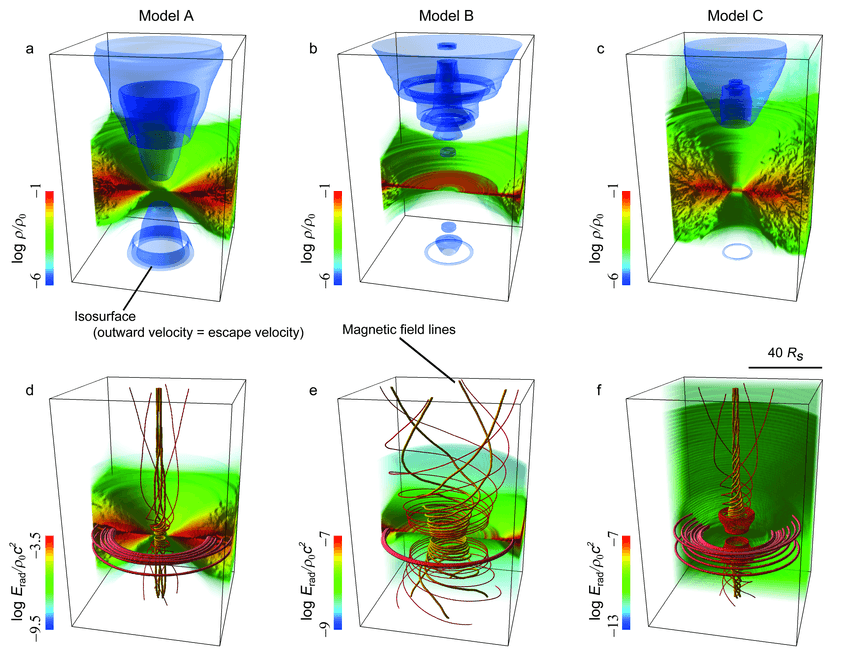Featured Articles
Global Radiation-Magnetohydrodynamic Simulations of Black Hole Accretion Flow and Outflow: Unified Model of Three States
Ken Ohsuga (NAOJ)
Shin Mineshige (Kyoto University)
Masao Mori (Tsukuba University)
Yoshiaki Kato (JAXA)

Understanding gas accretion to the central supermassive black hole of galaxies has developed greatly and the standard disk model which appeared in the 1970s, has been extended by a slim disk model and a quasi-one-dimensional advection dominated accretion flow (ADAF) sometimes know as a radiatively inefficent accretion flow (RIAF) model. In these models, we are dealing with a phenomenological model for the origin of viscosity (the so-called α model). In recent yeasr, questions like the orign, geometry, and amplification of the magnetic fields in accretion disks have become clearer through MHD calculations. However, in order to obtain a more moder picture, it is necessary to consider the radiation pressure and radiative cooling. In other words, we must carry out radation-magnetohydrodynamic (RMHD) simulations - calculations that incorporate radiative transfer in MHD calculation.
The accretion disk may be divided into three states depending on the mass accretion rate. In descending order of mass accretion rate they are: slim disk, standard disk, and ADAF/RIAF. The main reason for the three different states is the different radiative cooling and effectiveness of the radiation pressure in disks of different density. We reproduced the three states using one single code, and determined the critical limit at which outflows from the accretion disk can be driven by radiation pressure, which corresponded to the case of a slim disk. Below the critical mass accretio rate, magnetic pressure is the main outflow driving force.
When the mass accretion rate exceeds the critical value, a thick disk is formed by radiation pressure and an outflow emerges that is largely driven by radiation (Model A). When the mass accretion rate is around 1% of the critical value, radiative cooling is very efficient and a thin disk is formed (Model B). When the mass accretion rate is around 0.01% of the critical value, radiative cooling becomes inefficient and a very thick disk of high-temperature plasma (RIAF) is formed (Model C). Outflows from the disks in Models B and C are accelerated by the magnetic pressure. Magnetic magnetic field amplification leads to energies in the magnetic field that are 2 times (Model A), 30% (Model B), and 20% (Model C) of the gas energy. In addition, we found that the viscous torque is approximately proportional to the pressure.
Furthermore, in this work, we describe the results of a very detailed analysis of the structure and dynamics of the accretion disk and outflow obtained in our radiation MHD simulations. We found that the gas in the supercritical state is rotating and that near the black hole (at around 4 Schwarzschild radii) it is supermagnetosonic. This is expected because the gas is also accelerated inward by the radiation pressure. The rotational motion of the inner disk is also present in RIAFs, despite the very small mass accretion rate. In addition, we also report on the radial density and temperature structure of the accretion flow and outflow flow, and the directional distribution of torques.
This paper appeared in the Publications of the Astronomical Society of Japan (PASJ). Preprint


 和 英
和 英